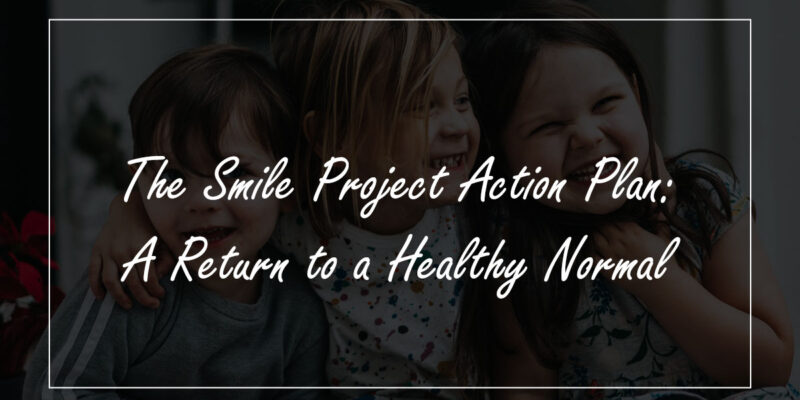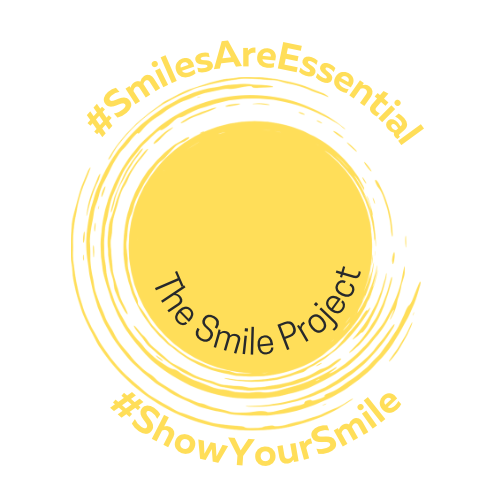Link to letter sent to Governor Edwards: https://drive.google.com/file/d/14ROp357UR4htIdAW3Kzml-vEbGAyT2sp/view?usp=sharingcc: Chief of Staff, Mark Cooper Executive Counsel,…

The Smile Project Action Plan: A Return to a Healthy Normal

As our children continue to suffer detrimental effects from the baseless restrictions set upon them by the CDC, BESE, local, state, and federal governments, we must formulate our own exit strategies. We must use the extensive volumes of publicly available data to come to understand our own risk, even if the CDC consistently and intentionally obfuscates that. With that information, we must do our best to provide temporary accommodations to those who are at higher risk, as well as those whom the CDC has scared into believing that they are. Doing this will set us on a clear path to return our children to a world that will allow them the freedom to develop healthfully.
To that end, the following is a phased plan for schools to un-mask. This plan allows people to opt-in or out, depending on their real or perceived risk.
- Provide individual choice: All students and staff should be given the choice to wear a mask or not.
- Easing in period for students with lower risk tolerance: Parents who are uncomfortable with their children going to school un-masked should be allowed to continue remote instruction for 8-12 weeks during this transition period. Available data on child risk should be communicated, as should be the limited transmission from children to adults, and the health benefits older adults enjoy from their exposure to children. The other side of the mask argument ought also be presented honestly (i.e. that a large body of research shows no decrease in viral transmission, and potentially increased transmission).
- Easing-in period for faculty with lower risk tolerance: For faculty and staff who are uncomfortable teaching with un-masked children, they should be provided with accommodations for 8-12 weeks where they teach remotely to students who are in-person. Parent volunteers, or aides with higher risk tolerance should be present to facilitate this type of learning, and maintain an orderly environment conducive to learning.
- Easing-in period for staff with lower risk tolerance: Staff whose jobs cannot be done remotely but are, or consider themselves, higher risk ought first to be offered staggered shifts (i.e. at times when children and teachers are not in class). If this is not feasible (e.g. cafeteria staff, school nurse, etc.), they should be offered temporary paid leave (8-12 weeks). Because transmission is much higher in the community than in schools, such leave ought to be predicated on signing sworn affidavits that they would adhere to the CDC’s recommendations, (which are, sadly, tantamount to house arrest) leaving the house only for outdoor exercise, medical and grocery store visits. Violation of those precepts would nullify the contract. These accommodations should only be offered, so long as the person is unable to get the vaccine. They ought also to be nullified in the event that even with such precautions, the person contracts COVID-19, as subsequently, they would enjoy natural immunity. These arrangements should not be expected to extend beyond a fixed period of time, which is intended more as an observation period to allow such people to gain confidence in the level of transmission within the school in an un-masked, un-distanced period.
- Encourage those who wish to wear masks to wear fit-tested N-95s. pointing out the serious concerns of many researchers that even these may offer only limited protection for COVID-19. People who are at serious risk, should consider remote options.
- Offer other reasonable precautions to faculty or staff, as requested, so long as these do not involve the imposition of unreasonable restrictions on others, (including but not limited to, masks, teaching outside on cold or rainy days, open windows when the temperature is below 40 degrees). These might include things like plexi-glass enclosures for teachers, moving children’s desk closer together so that teachers can be at a greater distance from them, fans directing airflow away from teachers and towards students, etc. Schools ought to be open to teacher suggestions. But such accommodations ought also to be coupled with the caveat that we remain unsure of the utility of such measures, and that if the person is truly at-risk, then the temporary remote option would be by far the safer option for them.
- During this 8-12 week period, people who are symptomatic should be tested, and if positive, the community notified. Contact with the infected person should not result in quarantine, unless the contact also becomes symptomatic. The WHO’s shorter 1 week guidelines (or until no longer symptomatic–whichever is longer) for quarantine ought also to be adopted. Community notification would serve the purpose not of forcing all contacts into quarantine, but of warning those at higher risk (or lower risk tolerance). This would then allow them to temporarily opt-in to remote options.
- After this 8-12 week period, all staff and students should return to normal operations. If, in some future period, cases of COVID or flu were once again to start spiking due to seasonal or other factors, these temporary measures might be re-introduced for those at higher risk or with lower risk tolerances.
- A return to normal should not be predicated on children receiving the vaccine, or some percent of teachers having gotten it. Because the vaccine is under emergency use authorization, it will likely be more than a year before it is approved for use in children. Further, their low risk profile makes the cost-benefit analysis very different for them. Additionally, the extremely high efficacy of the vaccines (95%), means that those people who are concerned will be protected by the vaccine. These people are further protected by the 100 million+ Americans who have gotten and recovered from COVID-19 as of March (CDC data is only through 12/31/21), and by the nearly 100 million people who have received the vaccine (60% of the population).
American Public Health has failed the American Public for over a year, refusing to inhabit reality, and not considering the American Public in any aspect of their response. Thus, it is incumbent on the public to come up with our own solutions . Compounding the problem, the medical and public health community has silenced those within its ranks who disagree with their utopian totalitarianism. We know this, because we receive daily messages from MDs, PhDs, MD/PhDs, and MPHs who are furious at the total destruction of their disciplines from within. These recommendations have been submitted for their review and have received enthusiastic endorsement. Those who have not been silenced, are only able to speak because they placate and repeat the CDC’s data-free dictates, which will result in children being masked the longest, despite data that children, personally, are not at risk, a large body of evidence that they are not major drivers of transmission, and overwhelming evidence that masks–particularly the way children wear them–do not work to limit viral transmission. This blind obstinance will result in children being masked and distanced into perpetuity (or until it becomes painfully clear that masks don’t work to stop the flu–which children do spread, and which does kill their grandparents).
As John Ioannidis has said, “medicine has now become the enemy of health.” In order to remedy this, public health officials must resume their rightful position as public servants who provide information and guidance, rather than dictates, threats, restrictions, and punishments. Restoring this balance will restore trust in public health, and improve health outcomes. In the current modality, where un-elected public health officials have been given god-like power and prestige, there is no incentive for them to provide accurate information. They do not guide, they rule. Rulers don’t give information, they give commands. To the extent they give information, it is to justify their commands. This is exactly how the CDC has behaved since March. In the absence of the ability to compel, you must inform. Thus, in order to get the CDC and other public health organizations to begin accurately informing us, we must strip them of their power to command us. The moment this is done, we will all have better information, and a public health apparatus that serves us—not the other way around.
So join us in this fight to save our children and their health. Because #SmilesAreEssential
#ShowYourSmile
For more information, please visit The Smile Project website:
Part 1: The Role of Children in COVID-19 Transmission in Schools
Part 2: Understanding Relative Risk
Part 3: Mask (In)Effectiveness in Limiting COVID-19 Transmission
An ENORMOUS thanks to Emily Burns, founder of The Smile Project for letting us use her action plan!



